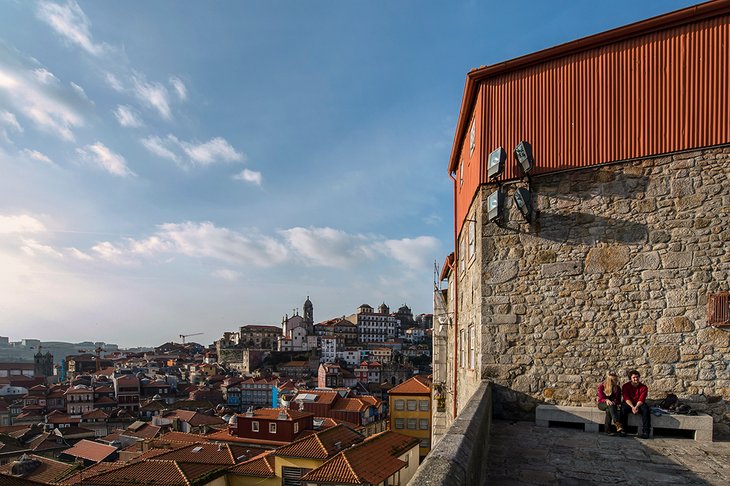Management Plan and Governance Model for the Historic Centre of Porto: the tool to preserve cultural heritage
Article

Filipa Brito
The 10 year plan is aimed at maintaining sustainability in Porto Historic Centre, as a world heritage site that is built under four main working areas: Heritage; Population, Housing and Communities; Economy; Environment and Mobility.
These are the main outlines of the Management Plan and Governance Model for Porto Historic Centre, Bridge Luiz I and Monastery of Serra do Pilar (CHPPM), presented yesterday morning, during the closing session of the Week of the World Heritage Sites, organised by Porto City Hall.
Porto City Hall councillor for Urbanism, Pedro Baganha opened the session and enhanced that the challenge is “to make all parties involved in the city’s development understand that the heritage value can and must be integrated in the economic equation of investment”.
“Heritage is not only what our legacy is, but also what we intend to hand over to the next generation. Architectural heritage, especially in a city like Porto, corresponds to an intangible economic non-tradable asset that places Porto in an elite category within the world urban network: World Heritage Cities”, affirmed Pedro Baganha, who is also the chairperson of the Board of Directors of Porto Vivo, SRU.
This action plan began to be drawn by Porto City Hall through the municipal company Porto Vivo, in collaboration with different agents of the social fabric, based on the principle of exchange of knowledge in the scope of the European project AtlaS.World Heritage – Heritage in the Atlantic Area. Sustainability of the Urban World Heritage Sites, an international partnership between five cities, namely Porto, Bordeaux, Florence, Edinburgh and Santiago de Compostela.
“In the next ten years, we want our historic centre abiding by the outstanding Universal Value, (…) sustainable and not relying on wishes, erratic conservation policies, but having achieved sustainable development by the very nature of its safeguard plan”, highlighted the CHPPM coordinator, Rui Loza, who presented the document.
Regarding the four main outlines, the first one, Heritage, aims to provide safeguard and promotion of the tangible and intangible heritage, through sustainable rehabilitation, integrated urban management and the empowerment, recognition and dissemination of the outstanding asset.
The second outline, Population, Housing and Communities, is based on the increasing of the resident population and the levels of dwelling comfort, and the strengthening of both cohesion and community values.
As for the third outline, Economy, the aim is to promote diversity, inclusion and economic sustainability, as well as the promotion of creativity and innovation, with the course of action following the action line of inclusive and sustainable tourism.
The fourth outline regards Environment and Mobility, and it also plans to improve mobility and strengthen environmental sustainability, in order to increase resilience.
The draw-up of the document involved a specialised team of municipal technicians. This work also involved the technical scientific support of experts of the Faculty of Engineering (FEUP), Faculty of Architecture (FAUP), Faculty of Economy (FEP) and the Faculty of Arts (FLUP) of the University of Porto.
Business investment exceeds tourism investment and creates 3.600 jobs
During the event, Porto City Hall councillor for Economy, Tourism and Trade, Ricardo Valente, addressed the subject of heritage conservation versus economy, and stressed that “the logic that Porto is just a city of tourism no longer matches reality”.
Ricardo Valente showed that business investment exceeded tourism investment in Porto, according to data by InvestPorto. In 2019, the majority of investments in the city of Porto was corporate and not tourism, with 63% of FDI. The investment portfolio until 2020 accounts for more than one million euros of investment and 3.600 jobs created.
Also, data from the National Statistical Institute of Portugal, shows that service staff in the city has increased, from 138.180 in 2016 to 153.913 in 2018. The same is true regarding companies established in Porto, which shows that from 40.373 companies in 2016, there were 43.631 in 2018.
As regards wealth creation in the city, the index presented as Gross Value-Added, rose above 20%, from 3.177 million euros in 2016 to 3.717 million euros in 2018.
The new Management Plan and Governance Model will result in the implementation of an integrated and participatory management and monitoring model, which was developed by the engagement and consultation with stakeholders within the social fabric, namely residents and visitors to the historic centre, academics, artists and both public and private institutions.
The AtlaS.WH project – Heritage in the Atlantic Area: Sustainability of the Urban World Heritage Sites – is funded by the Interreg Atlantic Area Programme through the European Regional Development Fund. The project is led by Porto City Hall, and its main goal is to create a network of urban world heritage sites (WHS) that will address common challenges, namely the protection of their identity and their cultural assets, to stimulate heritage-led economic and cultural development.